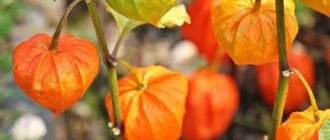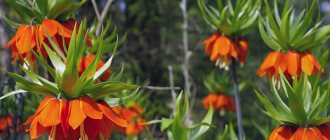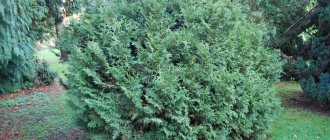Category: Garden
Today on sadzavodi.ru we will talk about planting and caring for feijoa, propagation by cuttings, layering and seeds of this wonderful plant. In addition to the fact that feijoa can decorate your garden, its fruits have many beneficial health properties.
What kind of plant is feijoa, photo
Akka (feijoa) is a fruit plant from the Myrtle family, also grown as an ornamental plant. Its homeland is dry subtropics. Of the three species of the feijoa genus, only one is cultivated.
Akka zellova (Feijoa zellova) is often grown for its edible fruits, although even without them the plant looks like an ornamental. In nature, this plant grows like a tree, and at home, like a bush. Feijoa leaves are beautiful, leathery, shiny on top, and covered with silvery fluff underneath. It blooms profusely, white-pink flowers are often collected in a corymb inflorescence. With good care at home, you can get 2-3 kg of fruits and berries from one plant.
Although the feijoa plant is light-loving, it grows well not only on southern windows, but also on eastern and western ones. It is not very demanding on temperature, however, in order for the plant to bear fruit, it is better to keep it in winter at a temperature of 8 to 12 degrees.
They grow it for the fruit!
It is a mistake to think that feijoa is a small green fruit or citrus, because the fruit is a berry. It looks like this: elongated, oval-shaped, 6-7 centimeters long, weighing up to 110 grams and a small number of seeds inside.
They ripen by the end of autumn, approximately by mid-November. The pulp is mainly eaten, but the skin (which ranges from yellow to dark green) contains a large amount of vitamins, has a pleasant aroma and can be brewed into teas.
Benefits of feijoa
The plant can be compared in its usefulness to seafood, since it contains a lot of iodine. At the same time, it is easily digestible. You can get your daily dose of iodine by eating just two feijoa fruits.
In addition to iodine, the fruits of the plant are rich in vitamin C, fiber, pectin and various acids and sugars. They are used in the treatment of various inflammations. Feijoa is useful for diseases of the gastrointestinal tract, liver, pancreas, thyroid gland, and kidneys.
It helps get rid of E. coli or Staphylococcus aureus.
Health Benefits
Supports the Digestive System
Feijoa is a good source of soluble fiber. And dietary fiber can stimulate intestinal motility and increase the secretion of gastric juice, which facilitates the digestion process and prevents constipation and flatulence. In addition, fiber can bind and remove carcinogens from the intestines, thereby preventing the development of colorectal cancer. Vitamin B6 makes this fruit an effective remedy against nausea and vomiting.
Does not increase blood sugar levels
People with type 2 diabetes can consume this fruit without any worries as it belongs to the low glycemic index food category. This means that as it breaks down in the body, it is slowly absorbed into the blood, preventing sudden changes in glucose levels in the bloodstream.
Stabilizes blood pressure
The benefits of feijoa include the ability to prevent high blood pressure. Rich in potassium and low in sodium helps relax blood vessels and ensure proper blood pressure in the body.
Reduces the risk of developing cardiac diseases
Fiber, ascorbic acid, vitamin B6 and potassium are known to be beneficial for maintaining heart health. The named substances are contained in sufficient quantities in feijoa fruits. In addition, it is important to remember that these fruits cleanse the body of excess cholesterol, which is also important for a healthy heart.
Helps fight infections
100 g of feijoa pulp contains approximately 82 percent of the recommended daily intake of vitamin C. And it is known to be a powerful natural antioxidant that helps the body resist infections and viral diseases. In addition, it has anti-carcinogenic properties, protects against free radicals, and effectively strengthens the immune system.
Antioxidant fruit
Ripe fruits contain manganese, which is an important cofactor for several enzymes necessary for energy production and the formation of antioxidant defenses. This means that some enzymes need manganese to neutralize free radicals, and feijoa fruits will help replenish its reserves.
A study conducted by American scientists showed that people who regularly consume this fruit have an almost 50 percent lower risk of dying from coronary heart disease.
Improves memory, attention and concentration
Several components of the fruit, including potassium, folic acid and various antioxidant substances, provide neurological benefits to the body. Folic acid, for example, reduces the risk of Alzheimer's disease and prevents cognitive disorders, protects against the development of dementia. Potassium is known to stimulate blood flow to the brain, activating neurons that improve concentration and cognitive abilities. And thanks to vitamin B6, feijoa will protect against depression. Researchers say that two servings of these exotic fruits per day will minimize the risk of developing depression, anxiety levels and the effects of stress.
Useful during pregnancy
Feijoa fruits are rich in iron and folic acid, which are critical for the formation of blood cells. Both substances are simply irreplaceable for expectant mothers. Iron will prevent anemia, and folic acid will protect the child from developmental pathologies. On the other hand, fruit pulp rich in fiber will improve intestinal function, which is a “weak spot” for many pregnant women. It should also be remembered that feijoa, more than other fruits, is rich in iodine, and it is an indispensable element for the body of the expectant mother.
Feijoa is perhaps one of the most unexpected sources of iodine
Source of iodine
This mineral deserves to be discussed separately. Many are accustomed to replenishing their iodine reserves from seafood, but this fruit is also beneficial for those with iodine deficiency. Feijoa should appear in the diet of people suffering from goiter or hypothyroidism. Regular consumption of the fruit will prevent obesity, improve metabolism, reduce sensitivity to cold, and relieve fatigue and depression, which are signs of thyroid dysfunction.
Other beneficial properties of feijoa fruits:
- prevent chronic colds;
- improve the functioning of the nervous system;
- strengthen gums;
- prevent anemia;
- strengthen bones;
- accelerate the body’s recovery after injuries and illnesses;
- improve lung health;
- protect against harmful bacteria;
- activate the thyroid gland;
- accelerates wound healing;
- help fight chronic weakness.
Planting and caring for feijoa - soil, watering, pollination
For normal growth, feijoas are planted in an earthen mixture of peat, humus, sand and turf soil, taken in the ratio: 2:1:1:1, or you can buy ready-made soil for planting. Water moderately, so as not to dry out or over-moisten the earthen ball. In the summer heat, daily spraying is necessary, in the morning or evening.
In nature, feijoa grows on poor soils, but responds well to feeding with any fertilizer, be it liquid or mineral sticks.
There is no need to form a crown, because the fruits grow on the branches of the current year and pruning will lead to the loss of part of the harvest. Only at the very beginning, when the young feijoa plant grows to 20 cm in height, it needs to be pinched so that it produces lateral shoots. Further care will only require sanitary pruning, removal of root growth and thinning of the crown if it becomes too thick.
In home growing conditions, you will need to pollinate the flowers with a brush in order for feijoa fruits to set.
Until the age of three, the plant is replanted every year, and after that, every 3 years. Transplanting it is similar to transshipment while preserving a clod of earth. When transplanting feijoas, they do not need to be buried in the soil.
Chemical composition
Berries contain a lot of sugars and organic acids. But they are famous primarily for their high iodine content: from 0.2 to 0.4 mg per 100 g of pulp. Most of this microelement is found in the fruits of shrubs growing near the seas: 8-9 mg per 100 g. The daily requirement of iodine for adults is only 0.15 mg. Calorie content of 100 g of berries – 61 kcal.
Chemical composition of feijoa (nutrient content per 100 g of fruit)
| Nutrients | Quantity | Norm | Normal share |
| Organic and inorganic substances | |||
| Squirrels | 0.71 g | 76 g | 0,9% |
| Fats | 0.42 g | 56 g | 0,8% |
| Carbohydrates (including sugars) | 15.21 g (8.2 g) | 219 g | 6,9% |
| Cellulose | 6.4 g | 20 g | 32% |
| Water | 83.28 g | 2273 g | 3,7% |
| Ash | 0.38 g | – | – |
| Vitamins | |||
| A | 0.002 mg | 5 mg | 0,4% |
| IN 1 | 0.006 mg | 1.5 mg | 0,4% |
| AT 2 | 0.018 mg | 1.8 mg | 1% |
| AT 5 | 0.233 mg | 5 mg | 4,7% |
| AT 6 | 0.067 mg | 2 mg | 3,4% |
| AT 9 | 23 mcg | 400 mcg | 5,8% |
| C | 32.9 mg | 90 mg | 36,6% |
| E | 0.16 mg | 15 mg | 1,1% |
| N | 0.4 mcg | 50 mcg | 0,8% |
| TO | 3.5 mcg | 120 mcg | 2,9% |
| RR | 0.295 mg | 20 mg | 1,5% |
| Lycopene | 5 mcg | – | – |
| Lutein and zeaxanthin | 27 mcg | – | – |
| Macronutrients | |||
| Potassium | 172 mg | 2500 mg | 6,9% |
| Calcium | 17 mg | 1000 mg | 1,7% |
| Silicon | 13 mg | 30 mg | 43,3% |
| Magnesium | 9 mg | 400 mg | 2,3% |
| Sodium | 3 mg | 1300 mg | 0,2% |
| Phosphorus | 19 mg | 800 mg | 2,4% |
| Chlorine | 8 mg | 2300 mg | 0,3% |
| Microelements | |||
| Aluminum | 384.4 mcg | – | – |
| Bor | 32.9 mcg | – | – |
| Vanadium | 2 mcg | – | – |
| Iron | 0.14 mg | 18 mg | 0,8% |
| Iodine | 20 mcg | 150 mcg | 13,3% |
| Cobalt | 1.4 mcg | 10 mcg | 14% |
| Lithium | 5 mcg | – | – |
| Manganese | 0.084 mg | 2 mg | 4,2% |
| Copper | 36 mcg | 1000 mcg | 3,6% |
| Molybdenum | 6 mcg | 70 mcg | 8,6% |
| Nickel | 6 mcg | – | – |
| Rubidium | 10 mcg | – | – |
| Selenium | 1.8 mcg | 55 mcg | 3,3% |
| Strontium | 16 mcg | – | – |
| Fluorine | 30 mcg | 4000 mcg | 0,8% |
| Chromium | 7 mcg | 50 mcg | 14% |
| Zinc | 0.06 mg | 12 mg | 0,5% |
| Zirconium | 10 mcg | – | – |
Indications for consumption of fruits The peel of the fruit also contains anthocyanins and tannins. The first compounds – powerful antioxidants and natural dyes – are widely used in therapy and cosmetology. The latter, having a tart, bitter taste, act as natural antibiotics.
The complex of biologically active substances contained in feijoa has a therapeutic effect and helps to weaken or completely eliminate the following pathological symptoms and conditions:
- iodine deficiency in the body;
- hypovitaminosis;
- Iron-deficiency anemia;
- inflammatory processes;
- elevated temperature;
- digestive disorders associated with dysbacteriosis, hypoacid gastritis, intestinal atony, biliary dyskinesia;
- pain caused by tonsillitis, osteochondrosis, arthritis, arthrosis;
- nephrolithiasis (with the exception of urate and oxalate kidney stones);
- chronic pancreatitis (beyond exacerbation);
- chronic bronchitis (also in remission);
- increased blood pressure.
Feijoa fruits help bring blood pressure closer to normal thanks to magnesium, potassium, and powerful antioxidants. However, a pronounced therapeutic effect for hypertension and atherosclerosis is achieved only at the initial stages of the development of these pathologies. If they are severe, you need to take medications rather than rely on berries. Moreover, these are seasonal fruits.
Feijoa propagation
Feijoa is propagated by cuttings, layering and seeds. Plants obtained from seeds bloom in the 5th - 6th year, and from cuttings and layering - in the 3rd - 4th year. Despite the fact that when propagated by seeds, the characteristics of the parent variety are not preserved, this method is used most often.
Seeds
Seeds are sown in boxes at a distance of 5-6 cm from each other. Feijoa seeds are small and therefore it is better not to cover them with soil, but to sprinkle them with sand (1-2 mm). To prevent the top layer of soil from being washed away when watering, it is better not to water, but to spray the soil with sowing with warm water.
Temperature
At a room temperature of 18-25 degrees, seedlings appear in three or four weeks. When feijoa seedlings have 2-4 pairs of leaves, they are replanted with root pruning, and next year they can be transplanted to a permanent place.
Propagation by cuttings
If you need to preserve the characteristics of the variety, then you need to cut semi-lignified cuttings (at least 10 cm long) and, after treating them with heteroauxin for 16-18 hours, plant them in a microgreenhouse for rooting. There should be a temperature of at least 26 degrees, high humidity and additional lighting.
Reproduction by layering
Akka (feijoa) also reproduces by layering, but it should be taken into account that the lower branches of the plant are very fragile, so you need to bend them to the ground very carefully. You need to handle this plant with the same caution when replanting. But the minor inconveniences are compensated by the resulting harvest of healthy fruits.
Let’s summarize, according to experienced gardeners, feijoa propagation as a method:
♦Seeds. Ineffective because they germinate poorly. ♦By cuttings. Cut from the middle of the crown. The efficiency is high; after rooting, they are planted in a permanent place. ♦Root shoots. Fast and highly efficient.
Contraindications
It has been scientifically proven that feijoas produce a healing effect due to saturated organic acids. But their abundance is both an advantage and a disadvantage of the fruit. Along with strawberries, raspberries, currants, and citrus fruits, they can cause an acute immune response in the body in the form of allergic reactions. In addition, there are other contraindications to eating feijoa:
- individual intolerance to certain fruit ingredients;
- hyperacid gastritis;
- erosions and ulcers of the esophagus, stomach, intestines;
- excess body weight;
- diabetes;
- hypertensive crises;
- stroke;
- myocardial infarction;
- oxalaturia (oxalic acid diathesis);
- gout (inflammation of the joints due to urate deposition).
How to grow feijoa at home
If you do not take into account the fact that a tropical plant needs high air temperatures, feijoa can be called an unpretentious crop to care for. However, it is better to comply with some requirements when growing at home.
- This plant loves light, but it is worth considering that direct sunlight can burn its foliage. Therefore, the light must be diffused. In summer, when growing at home, you should take it out onto the balcony.
- It is best to plant feijoas in soil that consists of sand, turf and humus. You can purchase ready-made substrate in stores. Before pouring the substrate or prepared soil into the pot, you need to place calcined sand in it to prevent the development of mold.
- If you grow feijoas at home, an annual replanting is necessary every three years. Then it can be moved to larger containers only once every three years.
- In addition to timely watering, the plant needs to be sprayed with water to create good moisture.
Growing feijoa in open ground
In warm climates, feijoa can be grown in open ground. Feijoa seedlings are planted in the ground already in April. Feijoa loves slightly acidic soils, through which air and moisture should also penetrate well.
Feijoa grows quite quickly, but the height of its trunk depends solely on its growing conditions.
It can reach either two meters or five.
Usually, the plant’s root system begins to grow very actively, so when moving it to open ground, it is recommended to cut them off. The cut roots can be replanted to create a new tree. If you do not want the feijoa to grow tall, you need to pluck its branches that have reached a length of 20 cm.
In open ground, the plant needs feeding. It is advisable to fertilize the plant every month. Feijoas need to be fed with both organic matter and minerals. To do this, use potassium chloride, superphosphate, ammonium sulfate, which are diluted in water. Feijoa especially loves fertilizers containing potassium.
Loosening the soil
After each watering, it is necessary to loosen the soil near the tree; this will help provide oxygen access to the roots and retain moisture in the soil longer.
Watering
When growing feijoa, you should remember that it always needs moisture. But do not be zealous, as excess liquid harms the plant. Therefore, water after the top layer dries.
Fertilizer
To increase the volume of fruits, it is necessary to regularly feed the southern tree, alternating organic matter and mineral fertilizers. Fertilizing is carried out throughout the growing season.
Seasonal pruning and pinching
In order to limit the growth of feijoa, you need to pinch it, just do it carefully. Only seedlings that have reached a height of 30 cm are pinched, and 1/3 of the tallest shoot is removed.
Annual spring-autumn pruning of the plant is carried out regularly, excess branches are removed, and a crown is formed where the main branches grow and do not interfere with the growth of neighboring branches.
Do not forget about sanitary pruning; remove all dry branches and those with defects.
Preparing for winter
In harsh winter conditions, you should protect the plant by wrapping it for the winter. The frost resistance of the tree is average; it can withstand temperatures down to -11 ⁰C. In severe frosts, the entire plant will die. Further growth is possible only from the root.
Why do many gardeners prefer to grow feijoas outdoors in the garden?
Because this plant blooms beautifully. The flowers of the plant are white on top and crimson inside. The long stamens stand out especially. In open ground, the plant blooms throughout June.
However, the ovary is formed only after three years. And when planting seeds - after at least five years. The fruits resemble elongated green lemons. Feijoa, as a fruit, is quite tasty. It combines the flavors of pineapple, strawberry and kiwi. The fruits begin to fall off at the beginning of winter. From one bush under different conditions you can get different amounts of fruit - on average about 15 kg.











